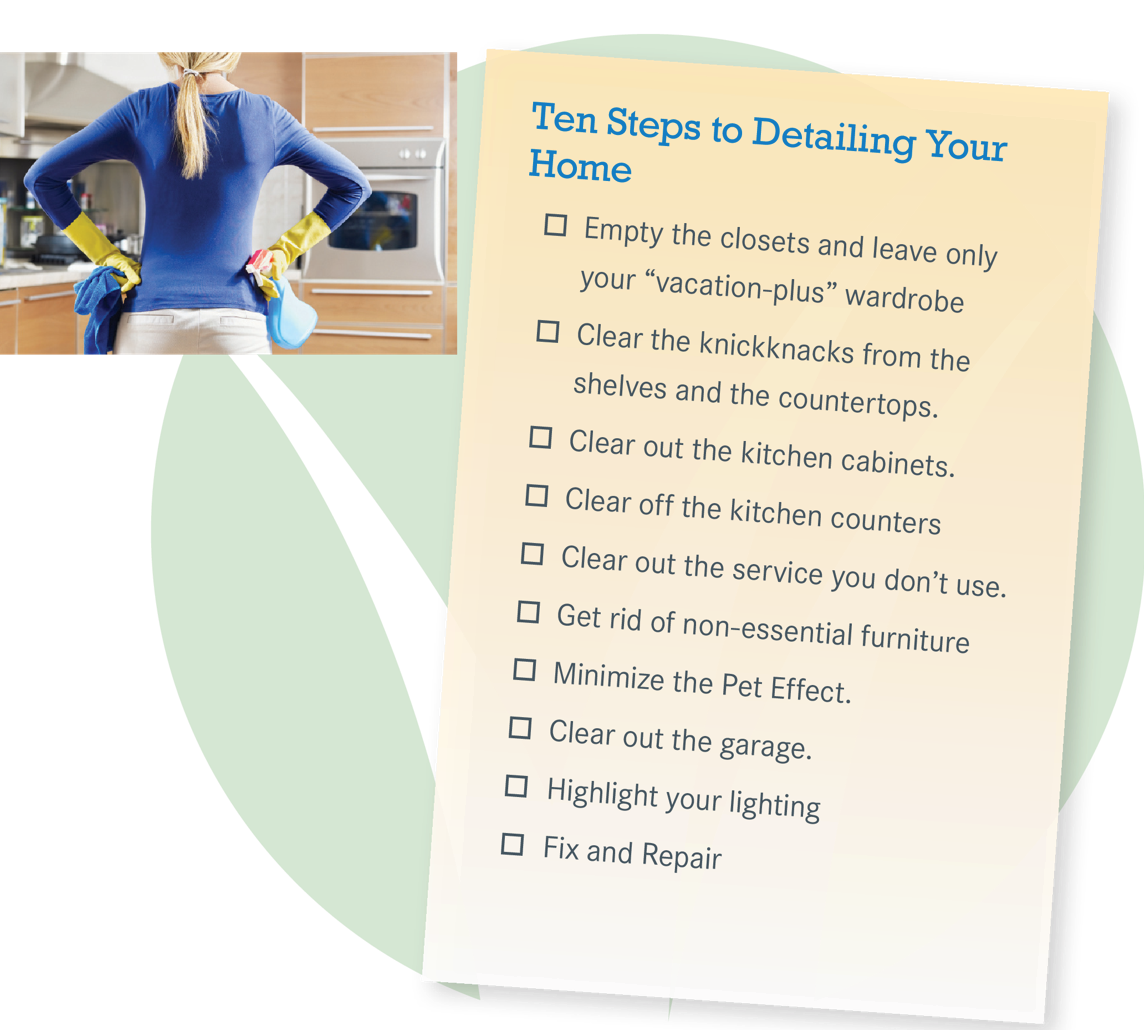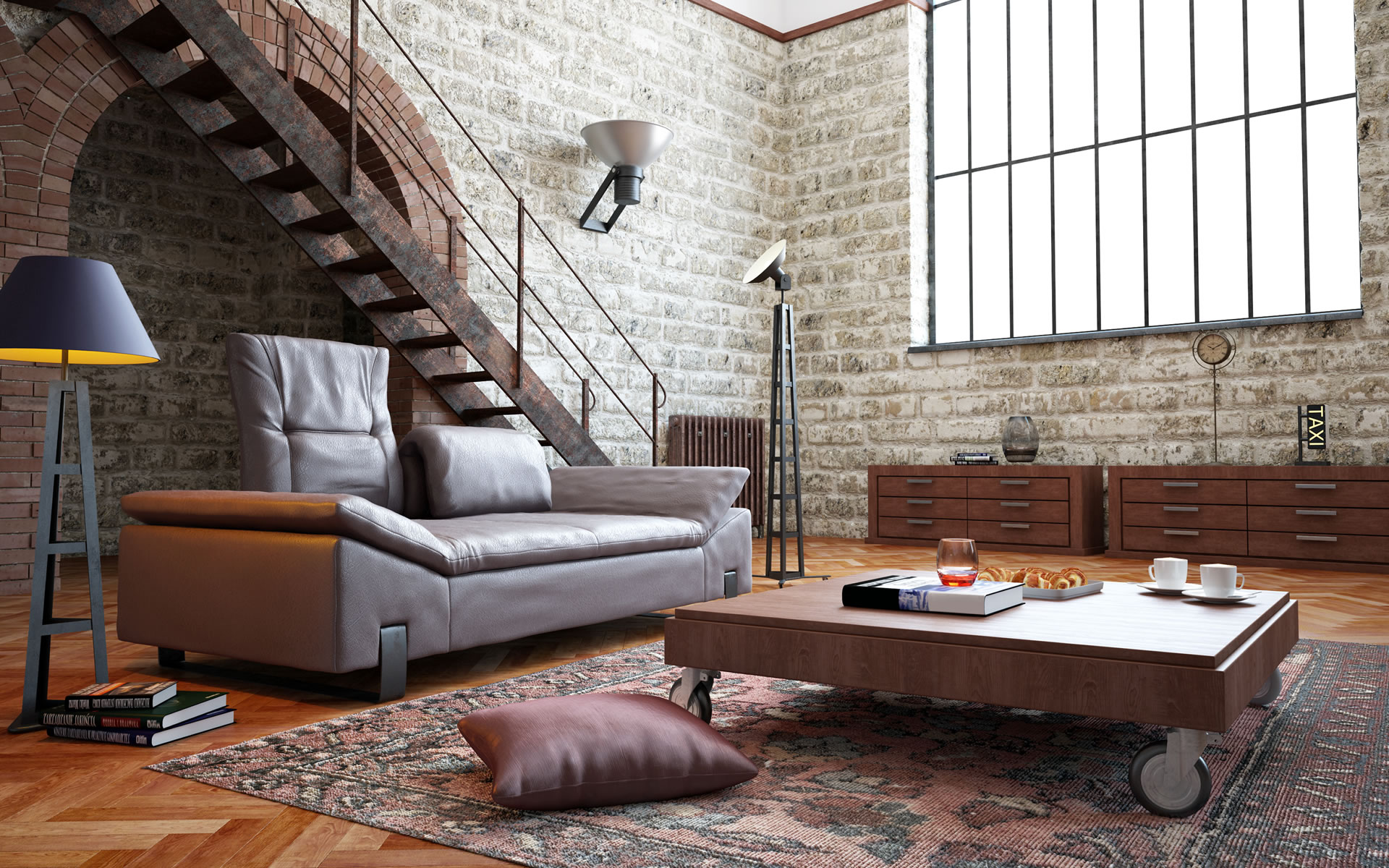 Here are some fundamental steps for clearing the clutter and detailing your home. Before you get started, consult with your agent about prioritizing what you need to do and identifying any problem areas to address.
Here are some fundamental steps for clearing the clutter and detailing your home. Before you get started, consult with your agent about prioritizing what you need to do and identifying any problem areas to address.
1. Empty the closets and leave only your “vacation- plus” wardrobe
In most homes, whether for sale or not, the closets are stuffed with clothes and the closets end up looking small and insufficient. A closet that is half-full looks a lot bigger, and sends the message that the home has ample storage space. The best way to do this is to identify your “vacation-plus” wardrobe. You know how when you go on vacation for a few weeks, you pack up just your favorite clothes, the ones that look good on you and fit well? That’s the wardrobe you should keep, plus some extras that you might need for special occasions. Everything else should go in storage or to charity.
2. Clear the knickknacks from the shelves and the countertops
Over time, most of us accumulate knick-knacks that start filling up shelves and countertops. Ninety percent of your knick knacks should be put into storage. You want the shelves and countertops to be clean and neat, not bulging with mementos from years of vacations and crafts fairs. Box up the knick knacks, get rid of old magazines that no one is going to read, and box up the books that you’ve already read. You want to leave a lot of empty space, so people can imagine their own things filling the shelves and countertops.
3. Clear out the kitchen cabinets
The most cluttered room in most houses is the kitchen. Go through the cabinets and shelves, and get rid of anything that you’re not realistically going to use anytime soon: half-empty cleaning supplies, old rags, and appliances that you rarely take out. Then open up the refrigerator and throw out the old condiments, salad dressings, sauces, and spices that you’re not likely to use in the next six months. You’ll make the kitchen seem much more usable if the cabinets and refrigerator shelves seem ample and roomy. And while you’re there, take down the magnets holding papers on the refrigerator, both because it looks messy and because you don’t want visitors seeing your personal effects.
4. Clear off the kitchen counters
Once you’ve cleaned out the kitchen cabinets, get started on the counters. Hopefully, you’ve cleaned out a lot of space in the cabinets to handle the appliances that you actually use, like your blender and your toaster. Now you can store those appliances in cabinets rather than cluttering up the counter. Similarly, put away all the stuff that accumulates on kitchen counters, like flour canisters, spices, knife holders, radios, soap dishes, and sponges. Pull them out when you need them, but otherwise try to keep the counters uncluttered.
5. Clear out the service you don’t use
Most people have lots of plates and cups, many more than they ever use. Unless you plan on doing a lot of huge dinner parties while your home is on the market, you don’t need more than service for 8-10 people. Clear out all the odd-and-end coffee cups, plates, service platters, and all the other various cabinet stuffers that make your cabinets look like they don’t have enough room.
6. Get rid of non-essential furniture
An empty room looks small, which is why developers create model homes that have furniture in them. But too much furniture can make rooms seem cluttered and small. Get rid of all the extra end tables, folding chairs, bridge tables, throw pillows, and everything else that’s taking up space. You don’t want to leave a room empty, but you want your home to seem spacious and airy.
7. Minimize the pet effect
Pet accessories and odors can be a major problem for many buyers. Make sure to clean your pet bedding, or even better go out and buy some brand new bedding. If you have a cat, make sure to use deodorizing litter and to change the litter every day or so. As for clutter, try to find an out-of-the-way place to store food bowls and pet toys when the home is going to be shown.
8. Clear out the garage
Agents list a lot of homes that have a “two-car garage,” even if the homeowners haven’t put two cars in the garage at the same time in years. Over time, we tend to turn our garages into storage lockers, with boxes, bicycles, gardening equipment, and other bulky objects. No one buys a house for the garage, but it helps to demonstrate that the garage can hold two cars by actually parking two cars in it. So have a garage sale, give stuff away, or store what’s worth keeping. And don’t let the garage become the dumping ground for all the junk that’s moved from the rest of the house. Whatever is stored should go offsite. The garage should be cleared out, cleaned, and left neat and tidy.
9. Highlight your lighting
Good lighting is crucial for showing off a listing. No one walks into a home and says, “Oh, isn’t this great how dark everything is?” Sometimes, the rooms are dark because owners haven’t replaced difficult-to-reach and difficult-to-find specialty lightbulbs for ceiling lights, track lighting, or kitchen and bath lighting. If you need help finding lightbulbs, ask your agent, but you need to make sure that every room is properly and fully lit, and that every light fixture has sufficient wattage.
10. Fix and repair
If things don’t work, and they can be repaired for a reasonable price, you should fix them. This includes things like electrical outlets gone dead, fixture appliances (like dishwashers or washer-dryers) that are running poorly, lights that have died, marks on walls, or anything else that can affect the presentation of the home. We would not generally recommend making major improvements in the home, though that’s something you can discuss with your agent, but small repairs should be completed to give buyers the impression that you’ve lovingly maintained your home.
Conclusion: Keeping it up
Finally, once you have the home properly detailed, it’s important to keep it that way. We realize that it’s difficult to live in a home you’re trying to sell, because it requires you to live a little differently than normal: no more leaving dirty dishes in the sink, clothes on the floor, or kids’ toys strewn throughout the home. It’s not easy, but it’s worth it, and the better you keep the home the less time you’ll have it on the market. So try to keep the home in viewable condition all the time, or at least schedule a thorough review every week or before every showing. Every morning, wake up thinking to yourself that your potential buyer is going to see the house for the first time that day, and what can you do to give a great first impression.

 Facebook
Facebook
 X
X
 Pinterest
Pinterest
 Copy Link
Copy Link




